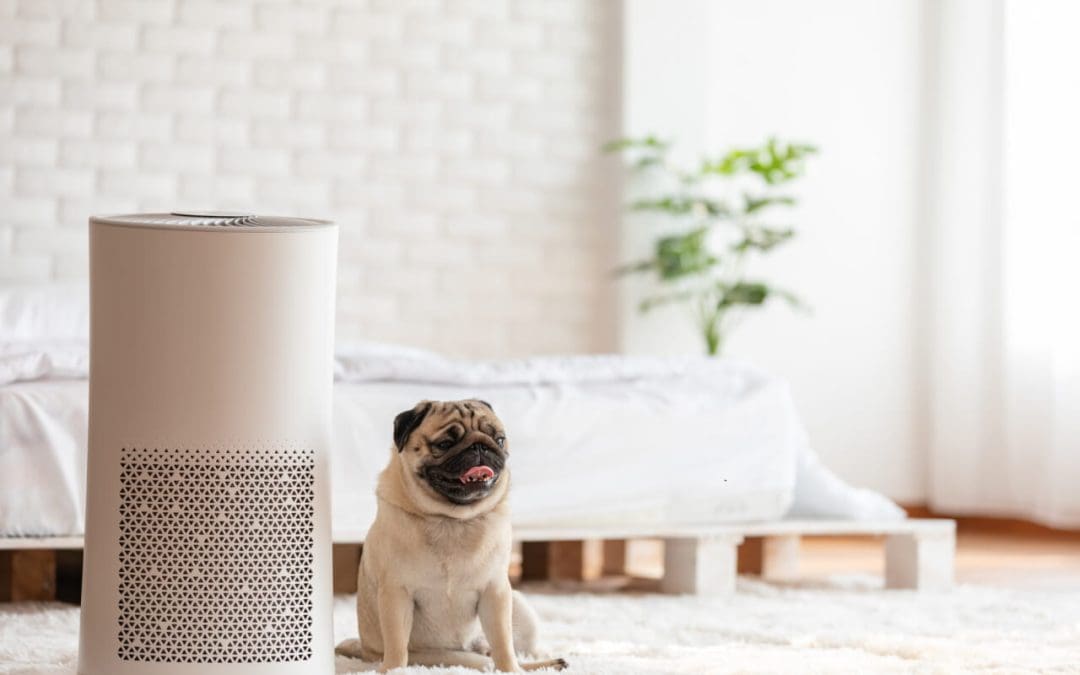If you or someone in your household struggles with allergies, you know how uncomfortable it can be. The good news is that allergy-proofing your home can make a significant difference. With the right adjustments and a little attention to detail, you can reduce allergens, improve indoor air quality, and create a more comfortable space for everyone.
Why Allergy-Proofing Your Home Matters
Allergens aren’t just an outdoor issue. Pollen, dust mites, mold spores, pet dander, and other irritants can settle into your home and build up over time. Once inside, they circulate through your air, collect on surfaces, and make themselves at home in carpets, bedding, and upholstery. For allergy sufferers, even a small amount of exposure may trigger symptoms.
Small, intentional changes throughout your home will limit your exposure to allergens and improve your quality of life, especially during peak allergy seasons.
Start with Indoor Air Quality
Air quality plays a huge role in managing allergies. To start allergy-proofing your home, consider how air is moving and being filtered throughout your living space. Your HVAC system is the first line of defense. Make sure you’re using high-quality air filters, preferably HEPA-rated, and replace them regularly to capture dust, pollen, and other airborne particles.
Improve air circulation by using exhaust fans in bathrooms and kitchens and by running an air purifier in key rooms like bedrooms and living areas. If your system allows it, adding a whole-house air purifier or dehumidifier will also help reduce moisture and prevent future mold growth.
Allergy-Proofing Flooring and Fabrics
Carpeting, rugs, and upholstered furniture can trap allergens and make them hard to remove. Consider replacing wall-to-wall carpet with hard flooring like wood, tile, or vinyl. If carpet removal isn’t an option, vacuum frequently using a vacuum with a HEPA filter, and have carpets professionally cleaned at least once a year.
Curtains, bedding, and throw pillows also collect allergens. Wash linens regularly in hot water and choose materials that are easy to clean. If possible, opt for washable window treatments and dust using a damp cloth instead of a dry one to prevent particles from becoming airborne.
Control Humidity and Prevent Mold
Humidity plays a big role in allergy control. Dust mites and mold thrive in damp environments, so keeping indoor humidity levels between 30% and 50% will make your home less hospitable to them. Use a dehumidifier in damp areas like basements, and make sure bathrooms and laundry rooms are properly ventilated.
Check for hidden moisture sources—like leaky pipes, clogged gutters, or poorly sealed windows—and address any water damage quickly to avoid mold growth. Allergy-proofing your home means avoiding potential problems before they become health hazards.
Allergy-Proofing with Pets
We love our furry friends, but they can be major contributors to allergy symptoms. Pet dander, saliva, and fur cling to surfaces and float through the air. If someone in the household has pet allergies, consider designating pet-free zones—especially bedrooms.
Regular grooming and frequent bathing can reduce the amount of dander pets shed, and frequently vacuuming using a HEPA vacuum helps keep it under control.
Don’t Forget the Details
Dust and allergens love to settle in unexpected places. Ceiling fans, baseboards, light fixtures, and behind furniture are all common areas that collect particles. Regular deep cleaning and decluttering to reduce dust-collecting surfaces go a long way.
Small upgrades, like allergen-proof mattress and pillow covers or removing unnecessary fabric decor, can contribute to a healthier home environment. Over time, these changes create a space that’s easier to maintain and more comfortable for everyone.
Allergy-proofing your home is a smart, proactive step toward a cleaner, healthier space. With the right adjustments, you will reduce allergens, breathe easier, and create an environment that supports comfort and well-being year-round.
FAQs About Allergy-Proofing Your Home
How often should I change my HVAC filters?
At a minimum, every three months. During allergy season or if you have pets, changing them monthly is best to maintain better air quality.
Is it necessary to get rid of all carpet?
Not necessarily, but minimizing carpeted areas and vacuuming frequently with a HEPA vacuum can reduce allergen buildup significantly.
Do indoor plants make allergies worse?
Some do, especially those prone to mold in the soil. To keep mold at bay, choose low-allergen plants and avoid overwatering.
Will allergy-proofing my home get rid of symptoms completely?
It may not eliminate symptoms entirely, but it can significantly reduce your exposure to triggers and improve your overall comfort indoors.
St. James Home Services, Inc. provides Home inspections in Durham, Alamance, Caswell, Chatham, Franklin, Granville, Orange, Person, Vance, and Wake Counties of North Carolina. If your area is not listed, please call us. Contact us to schedule our services.

